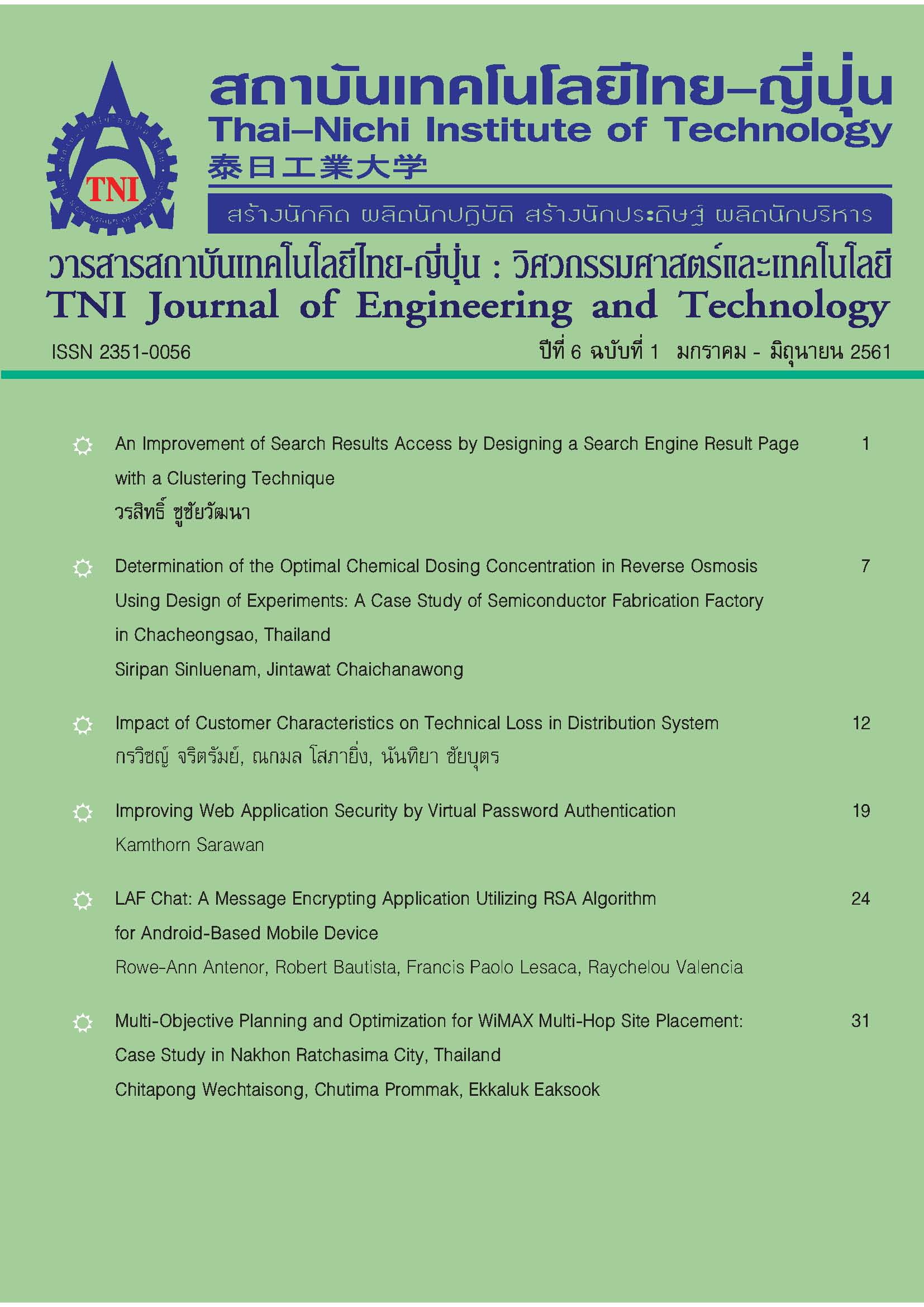Shredder for Physical Reduction of Straw and Stubble
Main Article Content
Abstract
Straw shredded rice straw and postharvest rice straw are postharvest technologies for reducing the physical size of straw and rice stubble to an average length of 50-100 millimeters. This helps to reduce the barriers to soil tillering, decomposing into organic matter faster, contributing to nutrient turnover in the soil. The cutter head design for cutting straw and rice stubble is a Cylinder Type work in the style of chop and direct throw. The axle of the blade is 38 mm long, 600 mm diameter steel blade. The blade is made of steel, 32 mm wide, 136 mm long, 3mm thick, 4 units. Serves as a cutter, straw and rice stubble with a maximum speed of 1,800 rpm. Performance tests were performed at different speeds at 68, 84 and 102 rpm with varying input straws at 3, 5 and 8 kg.The average length of cuttings was 2-5 cm, average 2.4 kg / min. 80% of the input straw The average length is 5-6 cm, average 4.4 kg / min. 88 percent of the input straw. The average length is 8-10 cm. The average volume is 7.5 kg / min. 93% of the input straw intake.
Article Details
Article Accepting Policy
The editorial board of Thai-Nichi Institute of Technology is pleased to receive articles from lecturers and experts in the fields of engineering and technology written in Thai or English. The academic work submitted for publication must not be published in any other publication before and must not be under consideration of other journal submissions. Therefore, those interested in participating in the dissemination of work and knowledge can submit their article to the editorial board for further submission to the screening committee to consider publishing in the journal. The articles that can be published include solely research articles. Interested persons can prepare their articles by reviewing recommendations for article authors.
Copyright infringement is solely the responsibility of the author(s) of the article. Articles that have been published must be screened and reviewed for quality from qualified experts approved by the editorial board.
The text that appears within each article published in this research journal is a personal opinion of each author, nothing related to Thai-Nichi Institute of Technology, and other faculty members in the institution in any way. Responsibilities and accuracy for the content of each article are owned by each author. If there is any mistake, each author will be responsible for his/her own article(s).
The editorial board reserves the right not to bring any content, views or comments of articles in the Journal of Thai-Nichi Institute of Technology to publish before receiving permission from the authorized author(s) in writing. The published work is the copyright of the Journal of Thai-Nichi Institute of Technology.
References
“คู่มืองดเผาตอซังสร้างดินยั่งยืนฟื้นสิ่งแวดล้อม,” กรมพัฒนาที่ดิน กระทรวงเกษตรและสหกรณ์, 2548. [ออนไลน์]. แหล่งที่มา: https:// WWW.LDD.GO.TH/MANUAL_STUMP/STUMP.PDF. [เข้าถึงเมื่อ: 07-ธ.ค.-2016].
กรมพัฒนาที่ดิน, การผลิตเมล็ดพันธ์พืชปุ๋ยสดและการใช้ประโยชน์เพื่อการปรับปรุงบำรุงดิน (เอกสารประกอบการส่งเสริมการเกษตร), กรุงเทพ: สำนักเทคโนโลยีชีวภาพทางดิน, 2556
“เกษตรกรไทยร่วมใจไม่เผาฟาง,” กรมควบคุมมลพิษ กระทรวงทรัพยากรธรรมชาติและสิ่งแวดล้อม, 2547. [ออนไลน์]. แหล่งที่มา: https://WWW.PCD.GO.TH/INFO_SERV/AIR_STRAW.HTM. [เข้าถึงเมื่อ: 26-มิ.ย.-2016].
ชุติวัฒน์ วรรณสาย และ ดิเรก อินตาพรม, “ผลของการจัดฟางข้าวต่อความอุดมสมบูรณ์ของดินและผลผลิตข้าว,” วารสารเกษตรนเรศวร, ปีที่ 3, ฉบับที่ 1, หน้า 30–35, 2540.
บรูด ลินคิส และเพง เช้งชื้อ, “การจัดการกับธาตุอาหารสําหรับข้าวนาพื้นที่ราบใน ส.ป.ป. ลาว,” สถาบันวิจัยเกษตรกรรมและป่าไม้ กระทรวงเกษตรและป่าไม้ (ภาษาลาว): ม.ป.ท., 2548
W. A. Kondinin, “Kondinin & Districts Farm Improvement Group,” Reader’s digest, vol. 10, no. 2, pp. 384–388, 1982.
G.H. Gilbertson, and A.C. Knight, “Straw chopping,” Agricultural Engineering, vol.41, no.4, pp. 120-125, 1986.
“Methane Emissions from Rice Cultivation: Flooded Rice Fields,” Intergovernmental Panel on Climate Change, 1996. [Online]. Available: https://www.ipcc-nggip.iges.or.jp/public/gl/guidelin/ch4ref5. pdf. [Accessed: 15-Jun-2017].
W. Kaewpradit et al., “Mixing groundnut residues and rice straw to improve rice yield and n use efficiency,” Field crops research, vol. 110, no. 2, pp. 130–138, Feb. 2009.
K. Surekha, K. P. C. Reddy, A. P. P. Kumari, and P. C. S. Cruz, “Effect of Straw on Yield Components of Rice (Oryza sativa L.) Under Rice-Rice Cropping System,” Journal of Agronomy and Crop Science, vol. 192, no. 2, pp. 92–101.


